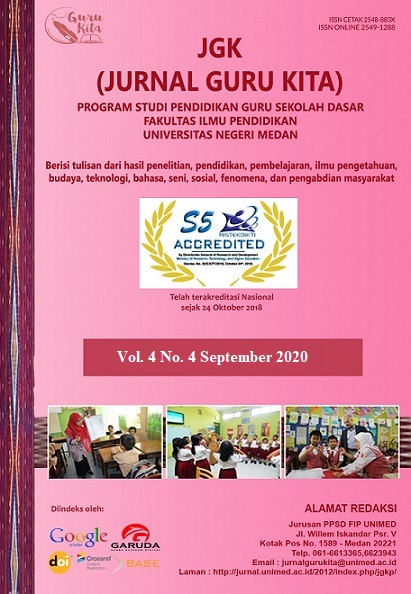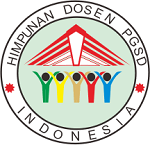TEORI MEDIA/TEORI DIFUSI INOVASI
DOI:
https://doi.org/10.24114/jgk.v6i2.31905Keywords:
Media, Diffusion, InnovationAbstract
This study aims to examine the theory of diffusion of innovation, the method of this research is library research, the results of this study are: The process of adopting innovation through several stages so that there is a public decision to accept and reject innovation. 1. The knowledge stage where the community obtains a number of information or knowledge, functions, benefits and various things regarding innovation from various information channels, including: friends, family, neighbors, and the mass media. 2. Then the community began to give both positive and negative attitudes, here there was a search for additional information from various communication channels. Communication channels make a big enough contribution to the spread of innovation to the community, interpersonal communication channels are more commonly found when there is a spread of innovation. 3. Next is the decision stage, namely the decision to adopt or reject the innovation, so that in the decision process there are people who adopt, that is, fully use the innovation and some reject the innovation. In making decisions, people tend to consider the relative advantages of innovation, which can be seen from the speed of healing, low and affordable costs, the suitability of the innovation to the needs of the community, as evidenced by observations by other people regarding the advantages of innovation, location affordability and perceptions of information. 4. The implementation stage is that people who choose to adopt will carry out their decisions by coming to the treatment of sangkal putung, on the other hand, people who refuse will also carry out the decisions they have chosen. 5. The last stage is the confirmation process in which the community assesses that the chosen decision is correct or not.References
Barus Sedia Willing, Jurnalistik : Petunjuk Teknis Menulis Berita, (Jakarta: Erlangga, 2011) hlm. 13-18.
Herry Hermawan, Literasi Media dan Kesadaran dan Analisis, (Yogyakarta),Calpulis, 2017 hal. 57
HM Zaenuddin, The Journalist, (Bandung: Simbiosa Rekatama Media, 2011), hlm. 10.
Nurudin, Pengantar Komunikasi Massa, (Jakarta : PT RajaGrafindo Persada, 2007), hlm. 187-188.
Richard West, Pengantar Teori Komunikasi, (Jakarta: Salemba Humanika, 2008), hlm. 49-64.
Rosidah, Umi Rochayati, Ridwan Daud Mahande, œMenerapkapkan Teori Difusi: Adopsi Program Literasi Media di Sekolah, dalam Zamroni (ed.), Theories of Diffusion of Innovation (Program Pascasarjana Universitas Negeri Yogyakarta, 2013).
Downloads
Published
How to Cite
Issue
Section
License
Authors published with the JGK (Jurnal Guru Kita) agree to the following terms:
- Authors retain copyright and grant the journal the right of first publication with the work simultaneously licensed under a Creative Commons Attribution License (CC BY-SA 4.0) that allows others to share the work with an acknowledgment of the work's authorship and initial publication in this journal.
- Authors are able to enter into separate, additional contractual arrangements for the non-exclusive distribution of the journal's published version of the work (e.g., post it to an institutional repository or publish it in a book), with an acknowledgment of its initial publication in this journal.
- Authors are permitted and encouraged to post their work online (e.g., in institutional repositories or on their website) prior to and during the submission process, as it can lead to productive exchanges, as well as earlier and greater citation of published work. (See The Effect of Open Access)




























